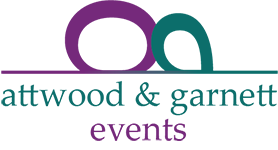By Dr Michelle Garnett & Prof Tony Attwood.
A lot of people still use the term high functioning autism (HFA), which is problematic because it is misleading. In this blog we will define the term, share what is problematic about it, and give you a way of viewing autism that is not only a useful way of talking about autism but also describes the pathway for the most successful outcomes for autistic people.
What is High Functioning Autism?
First, what is autism? Autism describes a different way of thinking, learning, relating, sensing, perceiving, moving, and empathising (see below). An important word in this definition is different, not disordered, defective or dysfunctional. When people say high functioning autism, they usually mean that the autistic person has autism and typical language skills and average to high average intelligence.
Autism describes a different way of:
- Thinking – creative, thinks ‘outside the box,’ literal, systematising, fact-oriented, need to know how things work
- Learning – more often a visual and kinaesthetic learner rather than a social or verbal learner
- Relating – honest, direct, difficult to communicate inner thoughts and feelings to others, not necessarily interested in people and often confused by their intentions and perspectives
- Sensing – a different sensory system for both external (sounds, tactile, taste, visual, smell) and internal (hunger, pain, emotions) senses
- Perceiving – notices details, enjoys symmetry, misses subtle social cues and can misread other’s intentions and expectations
- Moving – for some, not all, there are particular mannerisms that signify autism, tip-toe walking, a different gait, motor clumsiness, messy handwriting, and sometimes exceptional motor skills for specific sports such as swimming or cycling
- Empathising – often overwhelmed by other people’s emotions and unsure how to cope with and convey their strong empathic feelings
What is Problematic about the term High Functioning Autism?
Using the term high functioning autism implies that there is a linear scale of autism from low functioning to high functioning. Thinking of autism in such a linear way discounts the multiple gifts and challenges that come along with autism.
Rather than existing on a single continuum or dimension, autism is part of the person’s functioning on at least eight dimensions, including their social communication skills, interests, thinking style, behavioural repertoire, motor skills, executive functioning, adaptive functioning, language profile and personality. Thus, the Diagnostic and Statistical Manual for Mental Disorders, Fifth Edition (DSM5, APA, 2013) now refers to autism as a spectrum disorder.
A spectrum is defined in the Cambridge dictionary (Cambridge University Dictionary, n.d.) as a rainbow, each colour defined by different degrees of refraction of light according to wavelength. We can usefully apply this definition to autism by understanding each dimension of autism as being an expression of the person’s different neurology.
In addition, the person’s level of difficulty in functioning on each dimension can be described in terms of severity. For example, DSM5 now describes two dimensions of autism, social communication skills, and another dimension they call rigid and repetitive behaviours (RRBs). RRBs includes different motor movements , rigid thinking or interests, need for routine and consistency and a different sensory profile. DSM5 designates three levels from Level 1, least affected to Level 3, severely affected.
For example, an autistic person can have high level social communication skills, usually because of camouflaging, (Level 1) and severe RRBs, including need for routines, rigid thinking patterns and significant sensory issues (Level 3). In the past this person would be described as having high functioning autism, which can give a misleading idea about the amount of capacity she has, and how much intervention and support she needs. This example is a common experience for autistic girls and women, but happens for males too.
The way we talk about Autism affects our Thinking about Autism
In talking about autism, most autistic people prefer autism first language, i.e. autistic person, rather than person first language, as in person with autism. Putting autism first indicates that autism is part of who that person is, across multiple dimensions, as described above. Autism on its own is not a disability, instead it is a way of being in the world. Another preferred term is neurodiverse, indicating the common mechanism behind the broad spectrum of autistic differences, which is neurology.
The most useful way to think about autism is to understand it as a different neurology expressed in a ‘rainbow’ of ways that always represent both strengths and challenges in the person’s profile. The person is different not defective and deserves respect and admiration for how they cope in a world where most people are not only not autistic, but do not understand someone who is.
Changing the terms we use for autism from “person who is diagnosed with high functioning autism” to “autistic person who is discovered” leads to multiple and various changes in how we understand, relate to, assist and support autistic people. Changing our terminology changes our attitude.
Some of these changes are:
| Old Attitude | New Attitude |
| I have HFA, I am weird and defective. | I am a neurodiverse person with many personality strengths and abilities. |
| She has HFA, she will never make friends. | She is autistic, she will make a loyal and compassionate friend. |
| I understand HFA because I taught a student with autism last year. | There are multiple dimensions to autism. It will take a little while to understand how to support and accommodate the new autistic student in my class. |
| A person with HFA is likely to be unemployed. | Autism is a reason to be sought out by an employer for autism-specific strengths and abilities, including personality strengths. |
| That person can’t have HFA, their social skills are too good and/or they use eye contact. | Some autistic people have superb social skills, including use of eye contact, because they studied other people and learned them. That is an impressive achievement. |
| That person with HFA is weird, he sits alone in the lunchroom and never socialises. | Autistic people are often exhausted rather than energised by socialising, he is taking a much-needed rest. |
| She is so intelligent; she doesn’t need support. She is just lazy. | School is completely exhausting for an autistic person because of being socially and sensorily overwhelmed. She is a Hero for attending. I will plan how she can have true breaks during the day. |
When we increase our knowledge about autism, we increase our power for positive outcomes for everyone
Alongside attitude, the best intervention for autism is knowledge. This means learning about autism across each of its dimensions for the person you love, support or work with. There are so many resources for autism (see below).
Tips and Reminders for Autism
- Autism is a spectrum (think of a rainbow) of at least eight dimensions, not a linear dimension from low to high functioning.
- Autism on its own is a difference, not a disability.
- Most autistic people prefer autism first language, or the term “neurodiverse.”
- Approach an autistic person with respect for who they are and how they are in the World. Different is valid, diversity is needed.
- The best two interventions for autism are knowledge and attitude.
In Summary
The most useful way to think about autism is to understand it as different neurology expressed in a ‘rainbow’ of ways that represent both strengths and challenges in the person’s profile. The person is different, not defective. They deserve respect and admiration for how they cope in a world where most people are not autistic and do not understand autism.
The best interventions for autism are knowledge and attitude. Knowledge about autism in all its dimensions, and an attitude that respects, embraces, and celebrates autism.
We believe this so passionately that, over the past 20 years, we have developed numerous programmes, resources and online courses based on our research and combined clinical experience of several decades.
Our resources are to assist autistic individuals of all ages, and their parents, carers, teachers and health professionals:
Resources for Autistic Children 4-8 years old:
For Parents and Professionals:
“Fun with Feelings” – a two book combination that teaches parents to help their autistic child to manage their anxiety and anger from a very young age to prevent mental health problems later in life.
Garnett, M. S., Attwood T., Ford, L., Runham S. and Cook J. (2020a). Having Fun with Feelings on the Autism Spectrum: A CBT Activity Book for Kids Age 4-8. Jessica Kingsley Publishers.
Garnett, M. S., Attwood T., Ford, L., Runham S. and Cook J. (2020b). Ten Steps to Reducing Your Child’s Anxiety on the Autism Spectrum: The CBT-based “Fun with Feelings” Parent Manual. Jessica Kingsley Publishers.
The online course for Fun with Feelings:
During this 5.5 hour course Tony and Michelle describe how to use the Fun with Feelings course with your child for the best outcomes for your whole family.
Resources for Autistic Children 8-12 year old:
For Parents:
Teach your autistic child to understand how like and love is expressed in the family and with friends to set them on a course of better relationships through life.
Attwood, T. & Garnett, M.S. (2014). From Like to Love: Teaching Affection to Children on the Autism Spectrum. JKP: London.
For Professionals:
Within this book is a 6-session programme that can be run with an autistic child or group of children to demystify the social and emotional expressions of liking and love that strengthen human relationships, but cause so much confusion for autistic children. The programme can be run by a psychologist, social worker, speech pathologist, occupational therapist or counsellor.
Attwood, T. & Garnett, M.S. (2014). Learning How to Express Affection: A Cognitive Behaviour Therapy Programme for Teaching Affection to Children on the Autism Spectrum. JKP: London.
For Parents and Professionals:
Our autistic children can experience very strong emotions such as anxiety and anger that can increase their own suffering and the suffering of people around them. Strong expressions of anger and anxiety can lead to exclusion from meaningful activities such as school, family and community activities. These two programmes were developed to assist a parent or health professional teach an autistic child how to understand and manage their strong feelings of anger and anxiety.
Attwood, T. (2004) Exploring Feelings: Cognitive Behaviour Therapy to Manage Anger. Arlington, TX. Future Horizons.
Attwood, T. (2004) Exploring Feelings: Cognitive Behaviour Therapy to Manage Anxiety. Arlington, TX. Future Horizons.
The online course for managing emotions:
In our course, Emotion Management for Autistic Children and Adolescents, parents and teachers will learn why autistic children experience strong emotions, and importantly how to assist the child to express their emotions more effectively, hence improving behaviour and increasing inclusion.
For Professionals:
A textbook on how to modify cognitive behaviour therapy for autistic children and teenagers.
Scarpa, A., Williams White, S. and Attwood T. (Eds) (2013) CBT for Children and Adolescents with High Functioning Autism Spectrum Disorders. New York, The Guilford Press
Resources for Autistic Teenagers and Adults:
Employment:
This book comes with a number of short online courses for both the autistic employee or potential employee and their employer or manager to assist in creating success within the workplace.
Garnett, M.S. & Attwood, T. (2021). Autism Working: A Seven-Stage Plan to Thriving at Work. Jessica Kingsley Publishers.
Autistic girls and women:
Autistic girls and women often slip under the radar and are diagnosed later because they are successful camouflagers. Specific issues unique to autistic girls and women are discussed in this book and these online courses.
Cook, B. & Garnett, M.S. (Eds. 2018). Spectrum Women: Walking to the Beat of Autism. JKP: London.
Online course for Autistic women, parents/carers and professionals
Online courses for Professionals who see autistic girls and women
Beating depression as an autistic teenager or adult:
This book was written after 6 years of running and researching groups and individual programmes with autistic teenagers and adults, listening to them and adjusting the programme. The result is a 10-stage programme that can be completed at home with a mentor or in a clinical setting with a health professional.
Attwood, T. & Garnett, M.S. (2016). Exploring Depression: A CBT Self-Help Guide for Adolescents and Adults with Autism Spectrum Disorder Level 1 (Asperger’s Syndrome). JKP: London.
Navigating life as an autistic teenager or adult:
This book was written by elders of the autism tribe and co-edited by Tony to address numerous life issues that have been challenging for many autistic people, and to give strategies and ideas for what may work to face these challenges.
Attwood, T., Evans, C.R. and Lesko, A. (Eds) (2014) Been There. Done That. Try This! London, Jessica Kingsley Publishers.
Parents of autistic teenagers can feel frustration and even despair as they watch their autistic teenager struggle with their friendships and relationships, schoolwork, tasks of everyday living and sometimes anxiety and depression. Our online course, Succeeding with Autistic Teenagers covers all of these topics and more to help create success during the teenage years.
Autism in Couple Relationships
Your intimate partner may be autistic, and/or you may be. We developed this course for neurodiverse couples who wish to increase their understanding of their own and each other’s neurology for the purpose of enhancing their relationship.
https://vimeo.com/ondemand/agecouplesautism
The World’s Leading Textbook on Autism Level 1:
Prior to the American Psychiatric Association (APA, 2013) revising the diagnostic criteria for autism, ASD Level 1 and HFA were referred to as Asperger’s syndrome. A common question was: what is the difference between HFA and Asperger’s syndrome? The answer? They are spelled differently. If you are looking for the definitive guide on this topic, to this day it is still:
Attwood, T. (2006) The Complete Guide to Asperger’s Syndrome. London, Jessica Kingsley Publishers. Currently translated into 16 languages.
The online courses:
Tony and Michelle teach within four leading Australian Universities and are sought out internationally to provide training to health and educational professionals in autism. These four full day professional courses are designed to be taken individually or as a two-day package, depending on the age of the clients you typically see.
Masterclass: Diagnosis and Intervention with Autistic Children and Adolescents
https://attwoodandgarnettevents.com/online-course-masterclass-diagnosis-with-children-with-asd/
https://attwoodandgarnettevents.com/online-course-masterclass-intervention-with-children-with-asd/
Masterclass: Diagnosis and Intervention with Autistic Adults
https://attwoodandgarnettevents.com/online-course-masterclass-diagnosis-with-adults/
https://attwoodandgarnettevents.com/online-course-masterclass-intervention-with-adults/
References
American Psychiatric Association. (2013). Diagnostic and statistical manual of mental disorders (5th ed.). Arlington, VA: Author.
Cambridge University Press. (n.d.). dictionary.cambridge.org Dictionary. Retrieved November 27, 2021, from https://dictionary.cambridge.org/dictionary/english/spectru



